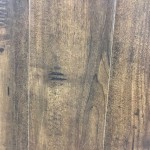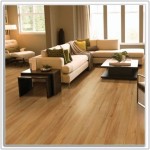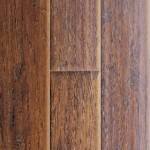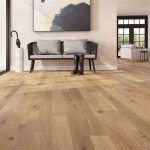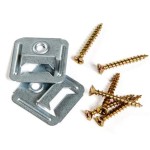Outdoor Wooden Flooring Tiles: A Comprehensive Guide
Outdoor wooden flooring tiles, also known as deck tiles, offer a versatile and aesthetically pleasing solution for transforming outdoor spaces. These tiles provide a comfortable and durable surface for patios, balconies, decks, and other exterior areas, offering a significant upgrade from concrete or bare ground. Understanding the various aspects of outdoor wooden flooring tiles, from materials and installation to maintenance and benefits, is crucial for making informed decisions regarding their use.
This article provides a comprehensive overview of outdoor wooden flooring tiles, exploring the different types of wood used, the installation process, maintenance requirements, and the overall advantages they offer. Careful consideration of these factors will enable homeowners and contractors to select and install the right type of wooden flooring tiles to enhance their outdoor living spaces.
Types of Wood Used in Outdoor Flooring Tiles
The selection of wood is paramount in determining the longevity and performance of outdoor flooring tiles. Different wood species possess varying degrees of resistance to moisture, insects, and decay. Here are some of the most commonly used wood types for outdoor wooden flooring tiles:
1. Teak: Widely regarded as one of the best options for outdoor use, teak is a dense hardwood renowned for its exceptional durability and natural resistance to water, rot, and insects. This resistance stems from its high oil content, which acts as a natural preservative. Teak flooring tiles can withstand harsh weather conditions and maintain their structural integrity for many years. However, teak is a premium material and therefore comes with a higher price tag.
2. Ipe: Another highly durable hardwood, Ipe (also known as Brazilian Walnut) is known for its exceptional strength and resistance to decay, insects, and fire. It's significantly harder than teak, making it resistant to scratches and dents. Ipe is a dense wood with a tight grain that provides excellent stability and longevity in outdoor environments. Similar to teak, Ipe is typically more expensive than other wood options but offers a long-lasting and low-maintenance solution.
3. Cedar: Cedar is a softwood known for its natural resistance to decay and insects, thanks to its aromatic oils. It's a more affordable option compared to teak and Ipe but requires more maintenance. Cedar is lighter in color and has a distinct fragrance that many find appealing. While cedar is relatively durable, it's less resistant to scratches and dents than hardwoods and may require regular sealing to protect it from moisture damage.
4. Redwood: Redwood, like cedar, is a softwood with natural resistance to decay and insects. It's known for its reddish-brown color and attractive grain patterns. Redwood is a good option for those seeking a natural and aesthetically pleasing look at a more moderate price point. However, redwood is relatively soft and can be susceptible to scratches and dents. Regular sealing and maintenance are essential to prolong its lifespan.
5. Pressure-Treated Wood: Pressure-treated wood is softwood that has been chemically treated to resist decay and insect infestation. This treatment enhances its durability and makes it suitable for outdoor use. Pressure-treated wood is a cost-effective option for outdoor flooring tiles but can exhibit a less natural aesthetic compared to hardwood options. Regular staining or painting can enhance its appearance and further protect it from the elements. It's important to note that some older pressure-treating chemicals contained arsenic; therefore, ensure that the wood used meets current safety standards and is approved for residential use.
6. Thermally Modified Wood: This type of wood undergoes a heat treatment process that modifies its cellular structure, making it more resistant to moisture absorption and decay. Thermally modified wood is a sustainable option that offers increased durability and stability compared to untreated wood. It's available in various wood species and can be a good alternative to traditional hardwoods, offering a balance of performance and cost.
Installation of Outdoor Wooden Flooring Tiles
Proper installation is essential to ensure the longevity and stability of outdoor wooden flooring tiles. The installation process typically involves preparing the sub-surface, laying the tiles, and securing them in place. There are different installation methods, each with its own advantages and considerations:
1. Interlocking Systems: Interlocking tiles are designed with integrated connectors that allow them to easily snap together. This method is often referred to as a "floating" installation, as the tiles are not directly attached to the sub-surface. Interlocking systems are relatively easy to install and require minimal tools. They are suitable for patios, balconies, and decks with a relatively level surface. The interlocking mechanism provides stability and allows for expansion and contraction due to temperature fluctuations.
2. Screw-Down Systems: This method involves screwing the tiles directly onto a supporting structure, such as wooden joists. Screw-down systems provide a secure and stable installation, making them suitable for decks and areas with uneven surfaces. This method requires more labor and expertise compared to interlocking systems, as it involves precise measurements and drilling. However, it offers greater flexibility in design and customization.
3. Adhesive Systems: Adhesive systems involve applying adhesive to the sub-surface and then pressing the tiles into place. This method is suitable for concrete patios and other solid surfaces. It requires careful preparation of the sub-surface to ensure proper adhesion. The adhesive should be specifically designed for outdoor use and compatible with the wood species. Adhesive systems provide a strong and durable bond but can be more difficult to remove or replace tiles if necessary.
4. Pedestal Systems: Pedestal systems use adjustable pedestals to support the tiles, creating a raised surface. This method is ideal for areas with drainage issues or uneven surfaces. The pedestals allow for water to flow underneath the tiles, preventing water damage and promoting air circulation. Pedestal systems are relatively easy to install and offer flexibility in design and height adjustment. They are commonly used on rooftops, balconies, and other areas where a raised surface is desired.
Preparation is Key: Regardless of the installation method, proper preparation of the sub-surface is crucial. The sub-surface should be clean, level, and well-drained. Any existing debris, vegetation, or unevenness should be addressed before installing the tiles. A level sub-surface ensures a stable and even flooring surface, preventing warping or movement of the tiles over time. Proper drainage prevents water from pooling underneath the tiles, which can lead to decay and damage.
Professional Installation: While some homeowners may choose to install outdoor wooden flooring tiles themselves, professional installation is recommended for complex projects or when working with expensive materials. Professional installers have the expertise and equipment to ensure a proper and long-lasting installation. They can also provide valuable advice on material selection, design, and maintenance.
Maintenance of Outdoor Wooden Flooring Tiles
Regular maintenance is essential to prolong the lifespan and maintain the appearance of outdoor wooden flooring tiles. The specific maintenance requirements vary depending on the type of wood used and the environmental conditions. Here are some general maintenance tips:
1. Cleaning: Regularly clean the tiles to remove dirt, debris, and mildew. Use a broom or hose to remove loose debris. For more stubborn stains, use a mild soap and water solution. Avoid using harsh chemicals or abrasive cleaners, as they can damage the wood surface. Power washing can be used cautiously on some wood types, such as teak and Ipe, but should be avoided on softer woods like cedar and redwood.
2. Sealing: Sealing the tiles can help protect them from moisture damage, UV rays, and stains. The frequency of sealing depends on the type of wood and the climate. Softwoods like cedar and redwood typically require more frequent sealing than hardwoods like teak and Ipe. Use a high-quality sealant specifically designed for outdoor use and compatible with the wood species. Always follow the manufacturer's instructions for application.
3. Oiling: Oiling can help maintain the natural color and luster of the wood. Teak and other hardwoods benefit from regular oiling, which replenishes the natural oils that are lost over time due to exposure to the elements. Use a teak oil or other suitable wood oil and apply it according to the manufacturer's instructions.
4. Inspecting: Regularly inspect the tiles for signs of damage, such as cracks, splinters, or warping. Address any issues promptly to prevent further damage. Replace damaged tiles as needed. Check for loose screws or connectors and tighten them as necessary.
5. Preventing Moisture: Ensure proper drainage to prevent water from pooling underneath the tiles. Trim back any vegetation that may be blocking airflow. Consider using furniture pads to protect the tiles from scratches and dents caused by outdoor furniture.
6. Winterizing: In colder climates, take steps to protect the tiles from freeze-thaw cycles. Remove any standing water from the surface. Consider covering the tiles with a tarp or other protective material during the winter months. This helps prevent damage caused by ice and snow.
By following these maintenance tips, homeowners can extend the life of their outdoor wooden flooring tiles and enjoy their beauty and functionality for many years to come. Consistent care and attention will preserve the wood's natural characteristics and protect it from premature wear and tear.
In conclusion, outdoor wooden flooring tiles offer a beautiful and durable solution for enhancing outdoor spaces. The choice of wood, installation method, and maintenance practices all play a critical role in determining the long-term performance and aesthetic appeal of these tiles. By carefully considering these factors, homeowners and contractors can create outdoor living spaces that are both functional and visually appealing.

Alden Design 27pcs Indoor Outdoor Wood Flooring Tiles For Patio Garden 12 X Natural Com

Btmway 1 Ft X Square Interlocking Acacia Wood Quick Patio Deck Tile Outdoor Checker Pattern Flooring 10 Per Box Cxxbn Gi33346w685 Tile01 The Home Depot

Interlocking Decking Tiles Outdoor Hsunns 12 X Set Of 20 Wooden Floor For Indoor And Patio Garage Pavers Brown A6945 Com

Btmway 1 Ft X Square Interlocking Acacia Wood Quick Patio Deck Tile Outdoor Checker Pattern Flooring 10 Per Box Cxxbn Gi33346w685 Tile01 The Home Depot

Interlocking Patio Deck Tiles Hsunns Set Of 10 Outdoor Wood Floor For Garden 12 X Garage Flooring And Indoor Brown A6898 Com

2024 Outdoor Flooring Trends 10 Ways To Upgrade Your Space

27pcs Wooden Patio Tiles Interlocking Flooring Deck Tile Outdoor Pathway 12x12

Wood Look Outdoor Tile As Stepping Stones Or A Garden Path Tiles Flooring

Classical Decking Tiles Natural Wood Waterproof Smooth Outdoor Flooring Clearhalo

Diy Merbau Deck Tile Garden Outdoor Wood Floor Flooring For Balcony Swimming Pool Bathroom China Hardwood Decking Made In Com
Related Posts

